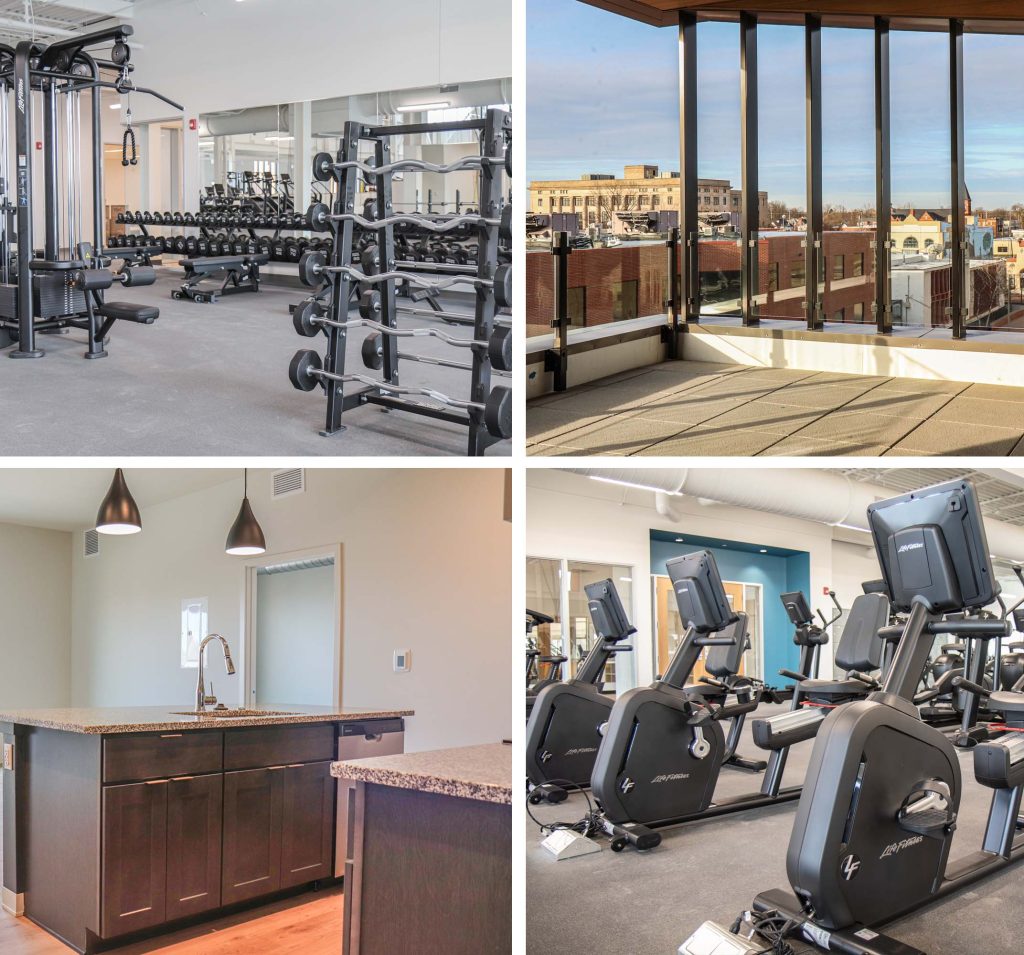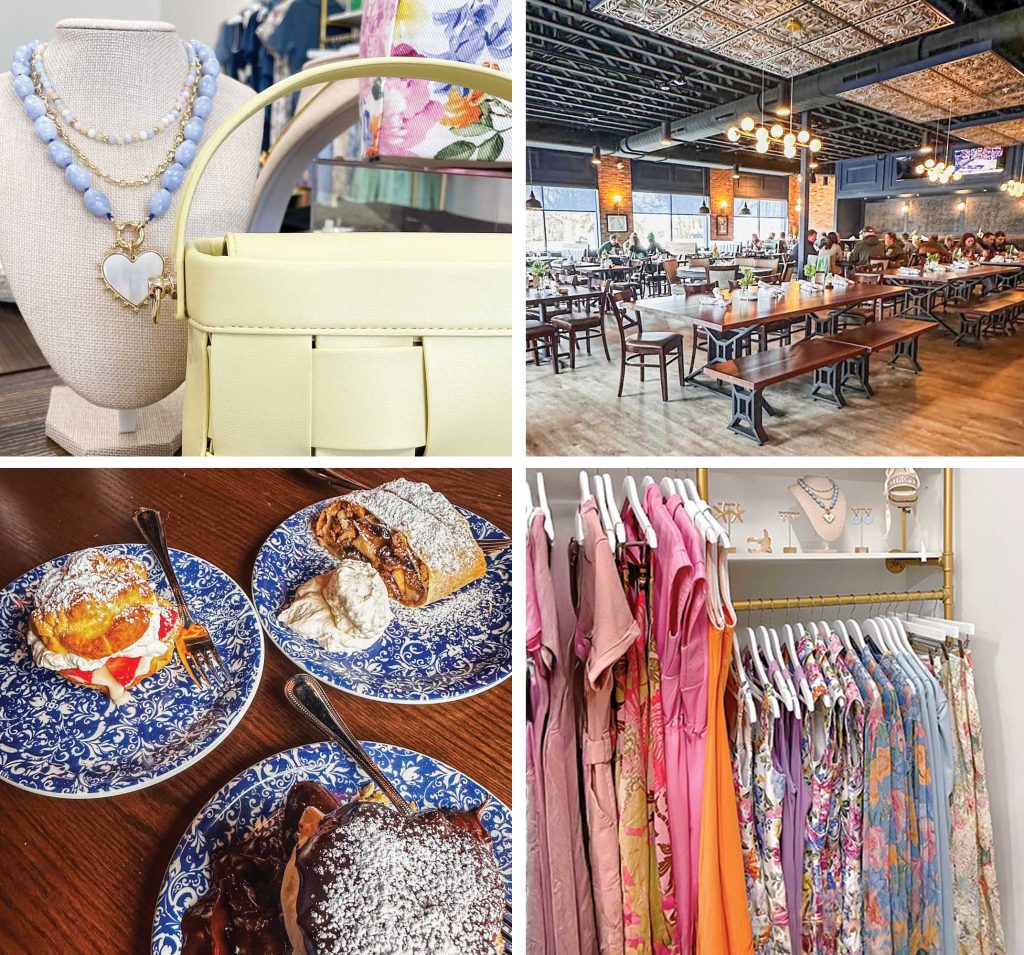
In mixed-use development, it’s all about finding the secret sauce: That unique, often intangible, combination of “live-work-play” that creates a vibrant community.
While not a new type of urban development – think popular shops and restaurants on the ground floor and apartments or offices on upper floors – mixed-use properties are once again revitalizing urban areas, attracting new residents and businesses, and creating more livable communities.
It’s proving a winning recipe in several cities across Genesee County.
For example, a $41-million, mixed-use development in downtown Flint is now home to the new YMCA of Greater Flint, 50 mixed-income apartments, Hurley Physical Therapy Clinic, and Crim Fitness Foundation.
Constructed at the corner of Third and Harrison streets, the five-story development known as LiveWell on Harrison celebrated its dedication and ribbon cutting on April 28.
It’s the latest addition to the Flint Health & Wellness District and another important step toward making the downtown a walkable community where residents can live, work, shop, exercise, and socialize.
“Having all of these organizations and amenities in one vibrant hub really creates this beautiful space to help impact the health and wellness of Flint,” said Shelly Hilton, YMCA of Greater Flint CEO.
“How wonderful to now have the opportunity to walk home from work, then head downstairs to the YMCA to get a workout in. Then maybe you go over to the Crim Fitness Foundation where they’re doing some type of nutrition programming or next door to physical therapy – all within a block of your front door.”
The new, nearly 60,000-square-foot YMCA features an aquatics center with a six-lane pool and splash pad, indoor walking track, fitness studios, personal training, gymnasium, and dedicated areas for child care and after-school programming.
The building was designed in response to an extensive community needs assessment.
“We know our community wants a safe place for families to recreate together, a place for seniors to stay mobile and spend time with their neighbors, and a place for everyone to take care of their mental well-being and physical health,” Hilton said.
“We just keep saying the community deserves this facility.”
The YMCA expects to double its 2,000-person membership with the new location.

It replaces the Downtown YMCA building built a block away in 1962. That site included a variety of program spaces and three floors with hotel units. With only 30-40% of the facility utilized and much of it inaccessible, it had reached the point of functional obsolescence.
For years the YMCA of Greater Flint explored the idea of constructing a new, standalone facility. The project finally came to life several years ago after partnering with Uptown Reinvestment Corporation (URC) to construct a mixed-use development in downtown Flint anchored by the YMCA.
The YMCA embarked on a capital campaign to cover its $21 million portion of the project. Thanks to the community’s generosity and an $11 million lead gift from the Charles Stewart Mott Foundation, the new YMCA is debt-free.
The URC partnership made all the difference, Hilton said.
“They brought all their expertise as a developer and their experience in residential housing, and we brought our expertise in serving communities, and it really made for this beautiful development that we believe is going to make so much impact in our community,” Hilton said.
URC was happy to partner with the YMCA on this project, said Joseph Martin, URC director of development.
“We’ve developed an expertise in utilizing various sources of funding that other nonprofits may not be familiar with,” Martin said. “We’ve really used that not only to advance our mission, which is to revitalize Flint’s downtown, but to help other nonprofits undertake their real estate needs.”
Bringing additional foot traffic and economic activity downtown is expected to serve as a catalyst for future economic development.
LiveWell on Harrison was supported by state, local, federal, and private funding sources, including the Michigan Economic Development Corporation, Michigan Community Capital, PNC Bank, and the City of Flint, as well as a $5.5 million donation from the Charles Stewart Mott Foundation.
The development includes 50 studio, one-bedroom and two-bedroom apartments on the second through fifth floors. Nineteen units are set aside for households earning no more than 80% of the area’s median income.
Mixed-use developments are also emerging in other corners of Genesee County.
In downtown Fenton, construction is underway on the 113 Mill Street development. Owned by Green Hamel Properties (Mike Green and Mark Hamel), the new building will feature two retail units on the first floor and three two-bedroom/two-bath apartments on the second floor.

The project is attracting attention. Edward Jones and another tenant have already leased each of the 2,300-square-foot retail spaces and a list of interested parties are waiting to view the apartments once construction is completed.
The 113 Mill Street project replaces a popular restaurant and bar severely damaged by fire in 2022. The $4 million redevelopment is a collaboration between Green Hamel Properties, the City of Fenton, the Fenton Downtown Development Authority, and the Michigan Economic Development Corporation.
Hamel said he’s seen a lot of interest in the apartments among millennials and baby boomers alike.
“There aren’t a lot of retail spaces or apartments available in downtown Fenton, so there’s really a huge demand for it,” Hamel said. “People love the idea of being downtown and close to shopping and concerts in the park. You feel very safe and secure.”
Fenton and Flint aren’t the only cities with folks clamoring to live downtown.
In Grand Blanc, developers Erik and Sara Perkins have conjured a new mixed-use development called The Garden Building on the site of a long-abandoned downtown property.
The 30,000-square-foot building at 210 Reid Road opened in December. It’s the culmination of the couple’s vision to create a community setting where people can unwind and make memories.

“We knew we wanted to open up a place because we just naturally like taking care of others,” said Erik Perkins. “This was something we just accelerated because of Covid and the time and the opportunity that was available with the financing and the government’s help.”
The $11 million development received support from the Michigan Economic Development Corporation and the City of Grand Blanc.
It includes a variety of businesses and amenities to entice residents and visitors. Irene’s Craft Kitchen & Biergarten is a European-style pub featuring good food, a fireplace, a beer garden, and Top Golf Swing Suite. It employs more than 80 people.
Other shops include Clothed Boutique, Melli Café, Grand Blanc Music, Glō Beauty Studio, Kerlyn Serenity Studio, as well as Wendling Orthodontics and a technology start-up company. It also features five upper-level loft apartments.
All retail and apartment spaces are already leased in The Garden Building, Perkins said.
The mixed-use development is surrounded by a busy city park and splash pad, ice cream shops, taverns, and grocery stores. All those neighborhood amenities combined with the right mix of tenants became the perfect ingredients for The Garden Building’s “special sauce.”
“This kind of development is about creating a space where people want to live and work and play together,” Perkins said. It took time to find the right recipe. But it was worth the wait.
“It’s a wonderful mix of people and places … what more could we ask for ourselves and for our community?” Perkins said.
